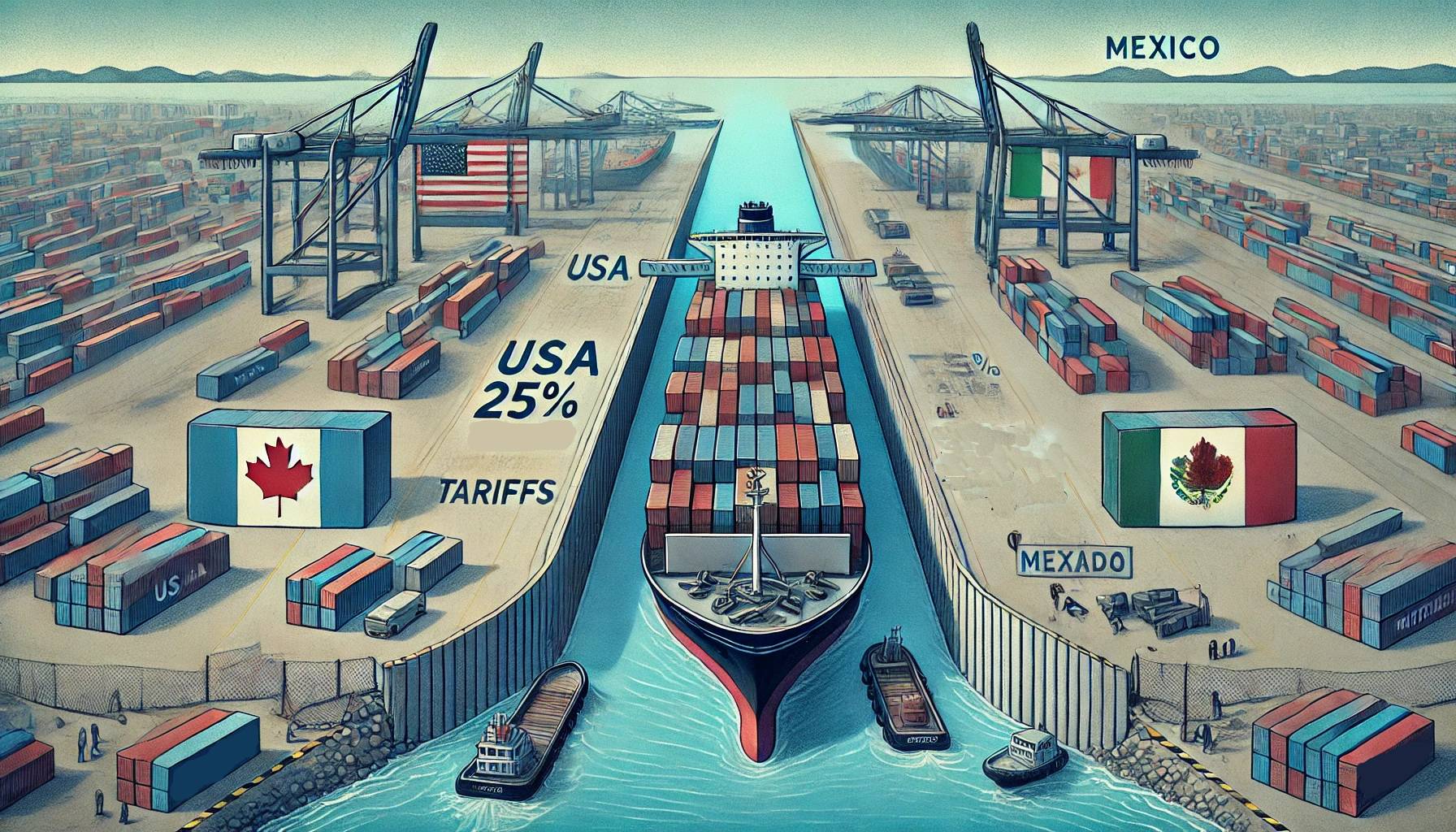| Key Points: – Trump plans 25% tariffs on Mexico and Canada starting February 1. – Critics warn of inflation and trade retaliation risks. – Supporters see tariffs as a tool to protect U.S. industries. |
President Donald Trump has announced plans to impose 25% tariffs on Mexico and Canada starting February 1, signaling a dramatic shift in North American trade policy. The move, revealed during an Oval Office signing ceremony, marks a stark departure from the United States-Mexico-Canada Agreement (USMCA) established during Trump’s first term. This decision could lead to higher prices for American consumers and significant changes in trade dynamics with two of the United States’ largest trading partners.
The executive action signed by Trump directs federal agencies to investigate the causes of U.S. trade deficits, evaluate the impact of existing trade agreements, and explore ways to implement stricter trade policies. Among the areas of focus is the USMCA, which the administration will assess to determine whether the agreement adequately serves American workers and businesses. The action also emphasizes the administration’s commitment to reducing the flow of fentanyl and undocumented migrants into the U.S. by leveraging stricter trade measures.
Trump’s proposal to overhaul trade policy aligns with his “America First” agenda, which seeks to prioritize American manufacturers, farmers, and workers. In his inaugural address, Trump emphasized the need to shift the burden of taxation from American citizens to foreign nations through tariffs. The administration’s aim to establish an “External Revenue Service” to collect tariffs further underscores the president’s commitment to this vision. However, the exact mechanisms for implementing these sweeping changes remain under debate within the administration.
Critics argue that imposing such high tariffs could backfire, harming the U.S. economy and straining relationships with key trading partners. Mexico and Canada collectively accounted for 30% of all U.S. imports in 2024, and retaliatory tariffs could impact American exports, particularly in industries like agriculture, automotive, and manufacturing. Economists warn that these measures could also exacerbate inflation, raising costs for American consumers already grappling with economic pressures.
Proponents of the tariff plan argue that import taxes could serve as a strategic tool to protect domestic industries and strengthen the U.S. economy in the long run. Trump has historically used tariff threats to bring foreign nations to the negotiating table, achieving concessions in trade agreements. However, the administration’s current stance has sparked concerns about potential trade wars and the broader implications for global trade relations.
The ideological divide within Trump’s economic team reflects ongoing debates about the best approach to achieve the administration’s goals. Some advisers advocate for a gradual implementation of tariffs to allow time for negotiations, while others support immediate and comprehensive measures to send a strong message. The legal basis for the tariffs, including the possible use of emergency powers, remains a key area of discussion.
As the February 1 deadline approaches, businesses and consumers are bracing for the potential impact of these tariffs. Analysts predict higher costs for imported goods, including electrical devices, transportation equipment, and everyday consumer products. Retaliatory measures from Mexico and Canada could further disrupt supply chains and affect industries reliant on cross-border trade.
The ultimate success of Trump’s trade policy will depend on its execution and the administration’s ability to navigate the complexities of international trade. While the president remains committed to fulfilling his campaign pledges, the long-term consequences of these tariffs on the U.S. economy and global trade landscape remain uncertain. Investors, businesses, and consumers alike will be closely watching as the situation unfolds.
